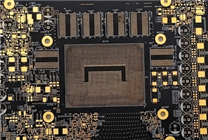Intel’s Battlemage Graphics Card Update: A Missed Opportunity
Summary
- Battlemage GPUs: Intel’s latest Battlemage series features two mainstream models, but high-end counterparts were surprisingly canceled.
- Technical Advancements: Canceled models BMG-X3 and BMG-X4 promised groundbreaking performance with features like integrated L4 cache.
- Intel’s Strategic Focus: The company is reconcentrating efforts on mainstream graphics solutions as it navigates a challenging market landscape.
Intel’s re-entry into the graphics card market generated considerable excitement among tech enthusiasts. However, the company now faces significant challenges in this competitive sector. Despite ongoing efforts with software and hardware improvements, Intel’s market share remains stagnant, prompting a shift back to core graphics development.
The latest offerings from Intel’s Battlemage series include the mid-range Ruixuan B580 and B570 graphics cards, both utilizing the BMG-G21 GPU chip. Alongside these, there are professional variants, the Ruixuan Pro B60 and B50. However, the anticipated high-end Ruixuan B7 series based on the more advanced BMG-G31 chip has not yet materialized.
High-End Models Canceled
Intel had plans for two cutting-edge high-end GPU cores, designated as BMG-X3 and BMG-X4. Unfortunately, both have now been officially canceled, raising questions about the company’s future in the high-performance graphics domain.
BMG-X3 and BMG-X4 Details
-
BMG-X3 (BMG-G10): This variant was designed to bridge the gap between the BMG-G31 and BMG-G21 cores, featuring 28 Xe cores and a memory bandwidth of 192-bit GDDR6.
- BMG-X4: The more powerful counterpart, equipped with up to 40 Xe cores and utilizing 256-bit GDDR6 memory.
One of the standout features of these high-end models was the integration of 512MB Adamantine Cache, a unique addition that aimed to enhance performance significantly.
Understanding the Adamantine Cache
While initially termed as L4 cache, the Adamantine Cache functions more closely as a Level 3 cache. Positioned on the base module in a 3D stacked manner, this design bears similarities to AMD’s Infinity Cache and could have provided substantial performance improvements.
The complex chiplet structure of these GPUs was expected to elevate Intel’s standing in this fiercely competitive market. However, with their cancellation, the company’s aspirations for high-end market share have dwindled.
Why the Cancellation?
The reasons behind the cancellation remain unclear. Industry speculation suggests factors such as the complexity of the technology, high production costs, or inadequate performance relative to expectations.
Interestingly, Intel is not alone in facing challenges in developing advanced graphics solutions. AMD’s planned RDNA4 family, which included a high-performance chip featuring intricate chiplet designs, similarly succumbed to development hurdles.
The Road Ahead
As Intel pivots its focus back to core graphics, it remains to be seen how the company plans to re-strategize its approach in the gaming and professional graphics card segments. With mainstream offerings already dominating its current lineup, Intel’s ambition to capture a larger share of high-end graphics is temporarily on hold.
The ability to innovate in the realm of graphics processing will be crucial as Intel navigates this competitive landscape. For now, industry watchers will keenly observe how the company reconciles its capabilities with market demands and consumer expectations.
In conclusion, while Intel has made promising strides in graphics technology, the recent cancellations serve as a reminder of the complexity and competitive nature of the market. As the company concentrates on its mainstream graphics solutions, fans and industry experts alike await further developments that may signal a renewed push into high-performance territory.
By realigning its focus and streamlining its offerings, Intel may yet harness the potential of its technological advancements and regain traction in the graphics card arena.









